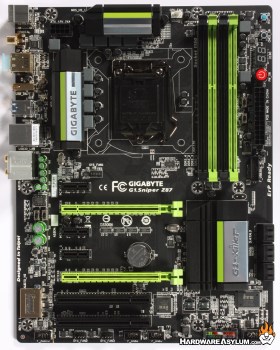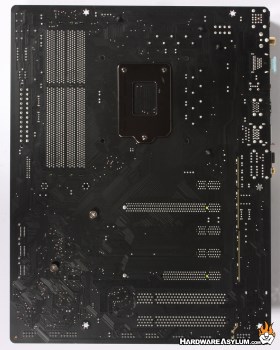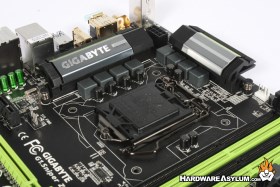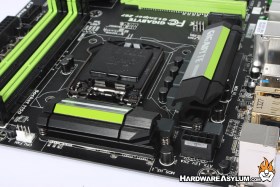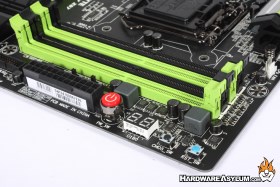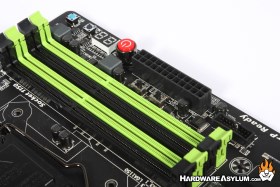Gigabyte G1 Sniper Z87 Motherboard Review
Author: Dennis GarciaBoard Layout and Features
G1 motherboards follow a distinct green and black color scheme. The military undertones have been removed and replaced with ornate metalized logos but the green has remained. The PCB features a matte black finish and the 2oz copper trace layers making the board extremely sturdy. Green accent colors highlight the primary expansion slots and onboard heatsinks
We like showing the back of these motherboards since it helps decipher what is going on in terms of the PCI Express slots and chip placement. The Sniper Z87 is very clean when it comes to trace routing which not only is cheaper to manufacture but also improves signal integrity.
Even for a gaming motherboard it is important to have excellent power delivery to remain stable under load and reduce power when at idle. The Sniper Z87 features a conservative 8-phase VRM design with ornate mosfet coolers on two sides.
Behind the PWM cooler you'll find the 8 pin CPU power connector. The connector is easily accessible with plenty of room to remove the plug as needed.
Dual channel memory comes standard on the Haswell processor and the G1 Sniper Z87 supports DDR3 modules from 1333Mhz up to 3000Mhz (under overclocking). A maximum of 32GB is addressable however a 64-bit OS is required to use it all. 24pin ATX power is located in the traditional location near the upper edge of the motherboard and out of the primary airflow.
A great feature found on the G1 Sniper Z87 is the inclusion of some benchtop controls including power, reset and CMOS clear. These come in handy when the motherboard is used outside of a chassis or when you are troubleshooting an issue.
You will notice two small switches near the power button that can override the default dual BIOS feature and allow you to save different BIOS images to each chip. This can be a great option if you are testing out beta firmware or need to quickly recover from a failed BIOS flash.

